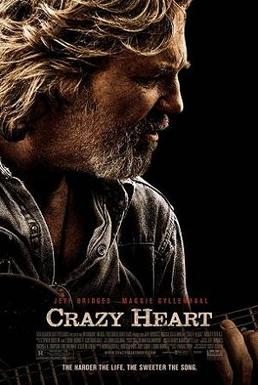
It really does Kick Ass
Do you find the idea of a foul mouthed 11 year old girl getting kicked in the face by a fully grown man entertaining? Neither do the makers of Kick-Ass, although that’s what the press would have you believe. A recent Daily Mail article cited scholars, psychologists and lawyers to warn the public of the dangers of a film who’s comic book source materials tag line is ‘Sickening violence, just the way you like it’. The film delivers on this promise, and is not for the easily offended or the under 15s, but for everyone else it is an absolute must see.
The self appointed superhero title that the films protagonist Dave Lizewski gives himself is the first hint towards the films tonality. Dave is an average 17 year old American geek who spends his day avoiding girls, talking with his equally geeky friends and fantasising. His two main fantasies involve sexual rendezvous with the fairer sex, and being a superhero. After ordering a scuba suit of the internet, he attempts to fulfil his desires.
Unlike his fantasy counterparts, Kick-Ass has no special powers, just a lot of courage and naivety. When his first attempt at stopping crime results in getting stabbed, he awakes to find himself unable to feel much pain due to damaged nerve endings. That ability is as good as it gets for him, but it does let him take a beating. It is during his first mass beating that he begins to gain recognition. Parodying society’s obsession with celebrity culture and YouTube he becomes an internet sensation. This attracts the attention of some real life superheroes, and some all too real bad guys.
Hit-Girl and Big-Daddy are the real superheros and the film is impressively amoral in its approach towards them. Big-Daddy is hell-bent to get revenge on the organised crime syndicate, ran by Frank D’Amico, that resulted in a long jail sentence and the death of his wife. To help him, he effectively brainwashes his daughter into a lethal weapon, 11 year old Mindy Macready becomes potty-mouthed assassin hit-girl.
This is where the crux of the controversy has come from, and unsurprisingly, most of the films enjoyment. Hit-Girl is the best character to grace action cinema since Uma Thurman killed bill back in 2004. Set-piece after set-piece sees her slicing and dicing her way through D’Amico’s men and you’ll be rooting for her every step of the way.
Hardly a role model for young girls, but the film is not for children. The film makers had the balls to make an adult superhero film. Like last year’s Watchmen, it has some impressive gore, highlights include finding out what happens when you microwave someone, and crush them in a car compactor. However unlike that film, it doesn’t take itself too seriously.
Mixing action and comedy, is as dangerous as horror and comedy. It can result in both genres countering each other out generating and a film devoid of laughs and tension. Last year’s surprise hit ‘Zombieland’ in got the balance right, and Kick-Ass masters it. From teenage awkwardness, to the absurdity of the comic book genre, Jane Goldman’s script (Mrs Jonathon Ross) delivers laugh after laugh. Crucially though, it never spoofs the superhero genre; it takes its legacy and its fans seriously, whilst celebrating the ridiculous nature of the whole concept.
It is a film us Brits should be proud of, despite being set in New York it is a largely British creation. Matthew Vaughn, who previously directed the excellent ‘Layer Cake’ and the drab ‘Star Dust’, shows great skill here. Despite budget constraints he delivers breathtaking action sequences, each one brutal, hilarious and exciting whilst never repeating the same ideas. Mark Strong is excellent as the ruthless and coldblooded D’Amico and Aaron Johnston does teenage geek to superhero better than Toby Maquire’s Peter Parker. This is home-grown British cinema at its most subversive and surprising.
What elevates Kick-Ass from a fun action comedy into the best superhero offering in years is its ability to make you care about its characters. It has real heartbreak and tragedy amongst its belly laughs, Dave Lizewki is a character everyone can relate to, someone who simply wants to make a difference and feel like he matters. Despite the films outrageous ethics, including a stand-out scene where Big-Daddy shoots bullets at Hit-Girl to test out her Kevlar vest and later buys her two butterflies knifes to rip flesh with, it has good intentions. When asked by some thugs if he is crazy, Kick-Ass responds ’20 people watching on while 3 ass wholes beat the S*** out of a guy, and I’m the one that’s crazy?’
It’s not perfect, but no film is. Its soundtrack is hit and miss; the choice to have bananarama playing while hit-girl slices apart a room of drug dealers is pitch perfect but accompanying and at times the soundtrack is incredibly moving. However another action sequence is let down due to the odd selection of the chase music from 28days later, thus reminding you of this film and ruining any immersion. It could also be said that with the exception of D’Amico, the bad guys are simply Italian-America stereotypes, but this can be pretty much applied to every Superhero film set in Manhattan. None of these criticisms are enough to stop this film from gaining my first five star award.
Oh yeah...and it has Mclovin’ (Christopher Mintz-Plasse) from Superbad in it as a double crossing superhero called Red Mist. What more do you want for your money?
Verdict
It is a film that will horrify a few, and provide the rest with perfect Saturday night entertainment. Even after repeated viewings it still provides more fun, laughs and excitement than the vast majority of mainstream cinema has shown in last 10 years.
***** (5 Stars)
The Daily Mail cited can be found here....
http://www.dailymail.co.uk/tvshowbiz/article-1254384/Jonathan-Rosss-wife-Jane-Goldman-causes-outrage-film-featuring-foul-mouthed-11-year-old-assassin.html





